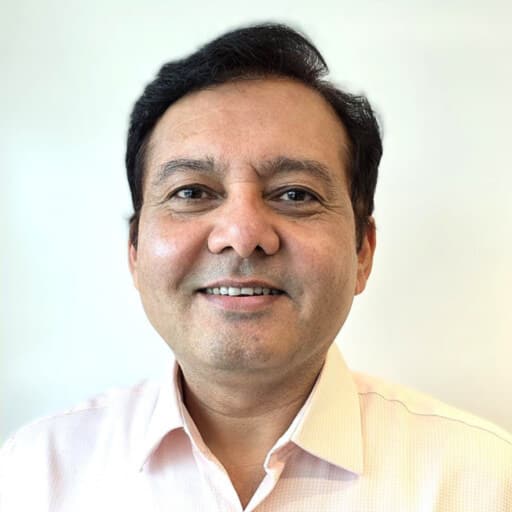India’s LF elimination drive, targeting 40% of the global burden, advances 7 SDGs by improving health, gender equality, inclusion, and livelihoods. Through mass drug administration, care, and intersectoral action, it drives both disease control and development.

Dr. Bhupendra Tripathi, Deputy Director - Infectious Diseases and Vaccine Delivery, Gates Foundation
Lymphatic Filariasis (LF), or elephantiasis, is a neglected tropical disease caused by mosquito bites. It can lead to severe swelling of the limbs and genitals, chronic pain, and long-term disability. The disease primarily affects the poorest communities, limiting mobility, income, and quality of life.
With only five years to go until the SDG 2030 deadline, India’s LF elimination drive stands as a critical test of our ability to meet global development targets, cutting across health, equity, and economic resilience. India bears 40% of the global burden of Lymphatic Filariasis (LF), making its elimination effort one of the most critical public health missions for the country. If we shift the lens from health to a more holistic view, LF elimination begins to resemble a full-scale development initiative, tackling poverty, productivity and climate vulnerabilities. It directly advances seven out of the seventeen Sustainable Development Goals (SDGs), outlined by the UN, including those on health, gender equality, inclusion, local leadership, and climate resilience, and has the potential to impact poverty reduction and decent work as well.
Fighting LF, Advancing SDGs
India’s LF elimination campaign has already made considerable progress toward SDG 3, focused on health and well-being. Through large-scale Mass Drug Administration (MDA), now conducted biannually across endemic states, the programme reached 175 million people in the February 2025 round alone. This widespread coverage is matched by high participation of over 90%, to interrupt transmission cycles effectively. Alongside this, the rollout of triple-drug therapy (IDA) across 98 districts has accelerated efforts to stop LF transmission in high-burden pockets. In terms of clinical care, 3,54,103 Morbidity Management and Disability Prevention (MMDP) kits have been distributed, and 1,21,486 hydrocelectomies have been performed in 2024 across India under Ayushman Bharat. Taken together, these interventions advance both SDG 3.3 (ending neglected tropical diseases) and 3.8 (achieving universal health coverage).
Beyond health, the campaign is quietly empowering some of India’s most marginalised groups, especially women and tribal communities. At the core of the programme are ASHAs, a dedicated all-women frontline health workforce that goes door-to-door to deliver medicines, counsel families, and build trust within communities. This increased visibility and recognition of women’s roles in public health aligns with the broader goals of SDG 5 on gender equality. In states like Jharkhand, where tribal and migrant communities are often excluded from routine services, the programme has adopted innovative outreach methods like folk media and mobile units in local dialects. These closely align with SDG 10.2 on social inclusion. Coordination between departments like Health, Urban Affairs, and Panchayati Raj reflects the spirit of SDG 17, which calls for stronger implementation through partnerships across sectors.
India’s LF elimination programme designates Integrated Vector Management (IVM) as a key element of its five-pronged strategy, officially deployed by the Ministry of Health and Family Welfare in January 2023, to interrupt transmission and enhance environmental health. This includes larvicide spraying, and household interventions like screened windows, doors, and eaves. These built-in measures not only decrease mosquito breeding but also promote safe housing (SDG 11.1) and support environmental sanitation aims under SDGs 6 and 13.
India’s LF elimination programme also has an impact on SDG 1 (No Poverty) and SDG 8 (Decent Work and Economic Growth). By reducing transmission and long-term disability, the programme helps prevent the loss of income-generating potential. Studies show that LF-related disability can lead to a loss of up to 15–20% of productive working days annually, a burden that is especially difficult for lower-income households, where even a single member’s reduced capacity can push families deeper into economic hardship.
As highlighted in the Sustainable Development Report 2025, Neglected tropical diseases like LF stand out for delivering long-term societal benefits from relatively short-term investments. They offer the possibility of permanent elimination, without the need for lifelong treatment or ongoing R&D, making them a smart, high-impact choice for development financing. This is corroborated by Oxford International Health research, which shows a 20:1 return on investment in LF elimination. Studies from Andhra Pradesh show that each hydrocele surgery or effective lymphedema intervention can restore an average of 29 working days per year per patient. By helping individuals return to productive work and lifting families out of recurring health expenditures, the programme directly advances SDG 8.5 on full and productive employment and SDG 1.2 on reducing poverty in all its dimensions. Critically, these advances have been made possible by an increase in funding for the LF elimination programme. Over just the last few years, financial allocations have gone up, powering everything from improved surveillance and diagnostics to mass drug procurement, social mobilization, and disability care. Investments in new technologies, community outreach, and patient support have translated into faster, deeper, and more equitable coverage.
Path to Viksit Bharat
India’s campaign to eliminate lymphatic filariasis is advancing the country’s development priorities in the right direction, with measurable contributions to multiple Sustainable Development Goals. However, to fully unlock the transformative potential of such disease elimination programmes, deeper intersectoral coordination is essential. For instance, greater convergence between health, housing, urban development, education, and rural livelihoods could further accelerate progress on safe housing, clean water and sanitation, and decent work. When ministries and departments align their strategies, from infrastructure to social protection, public health becomes a force multiplier for national development.
As India moves toward the vision of Viksit Bharat, the LF campaign demonstrates that disease elimination can also be a catalyst for broader developmental transformation. The sustained commitment of the Prime Minister’s Office, National Center of Vector Borne Diseases Control, Ministry of Health & Family Welfare, and NITI Aayog has been instrumental in generating this momentum, ensuring that health is placed at the heart of India’s development journey.
By continuing you agree to our Privacy Policy & Terms & Conditions
